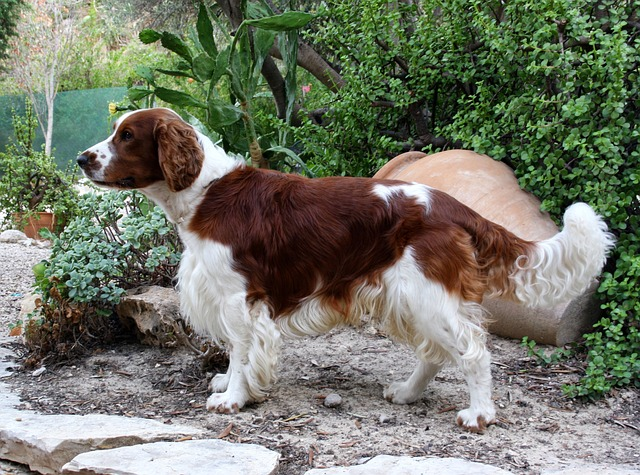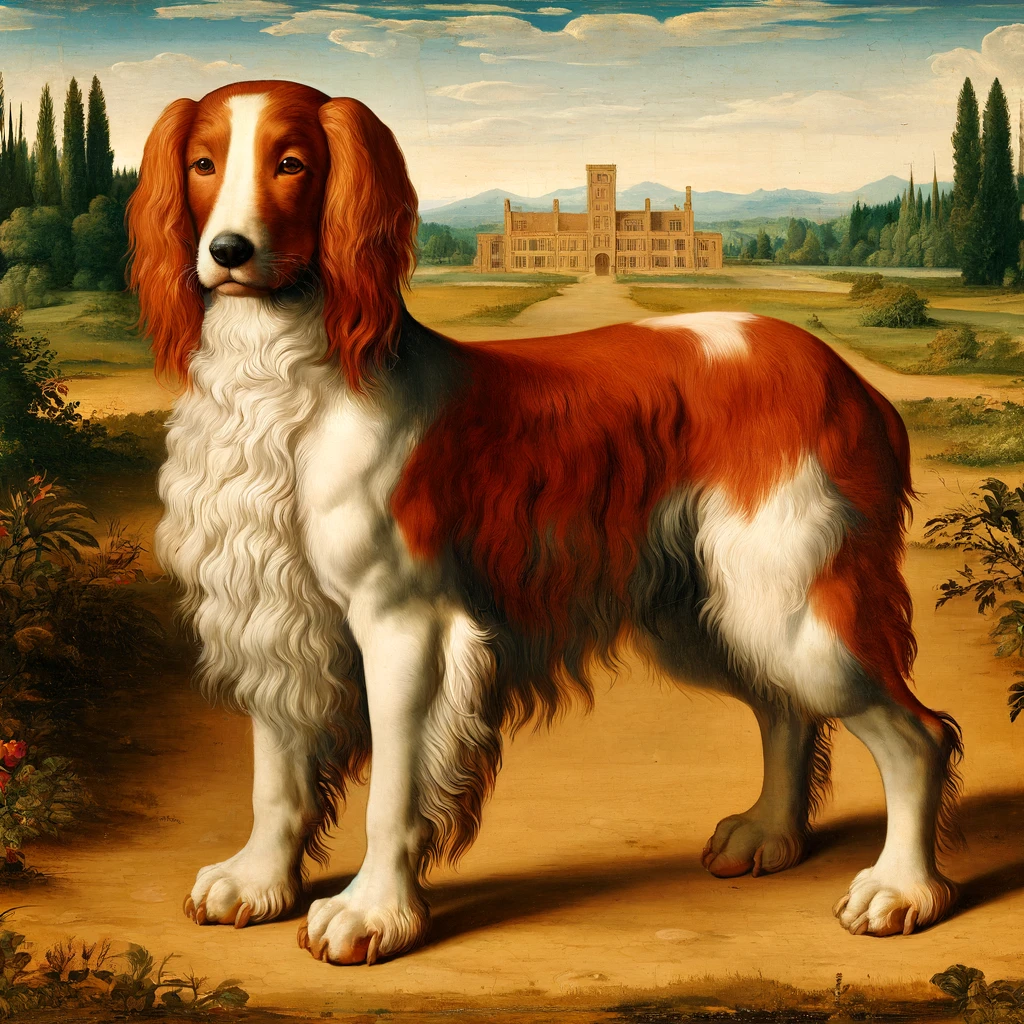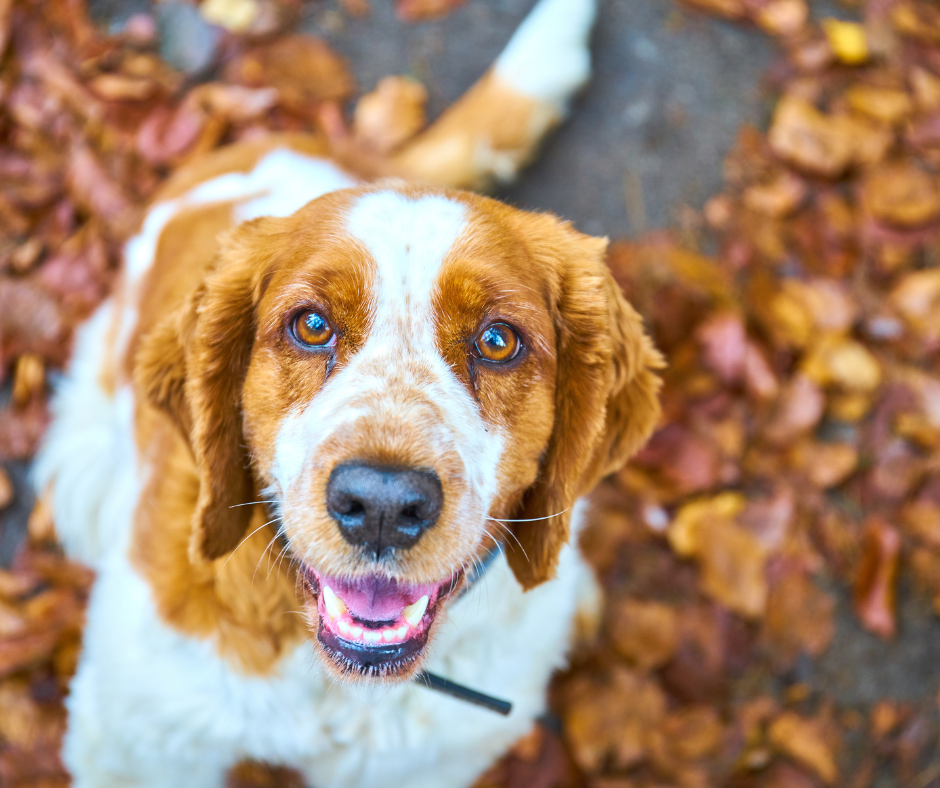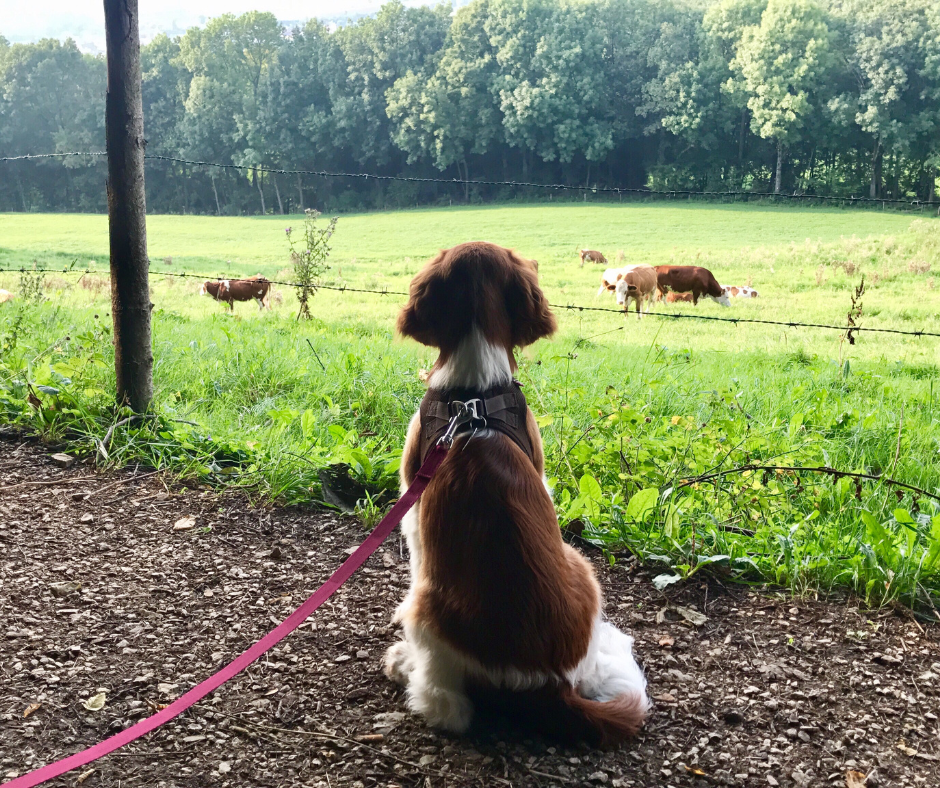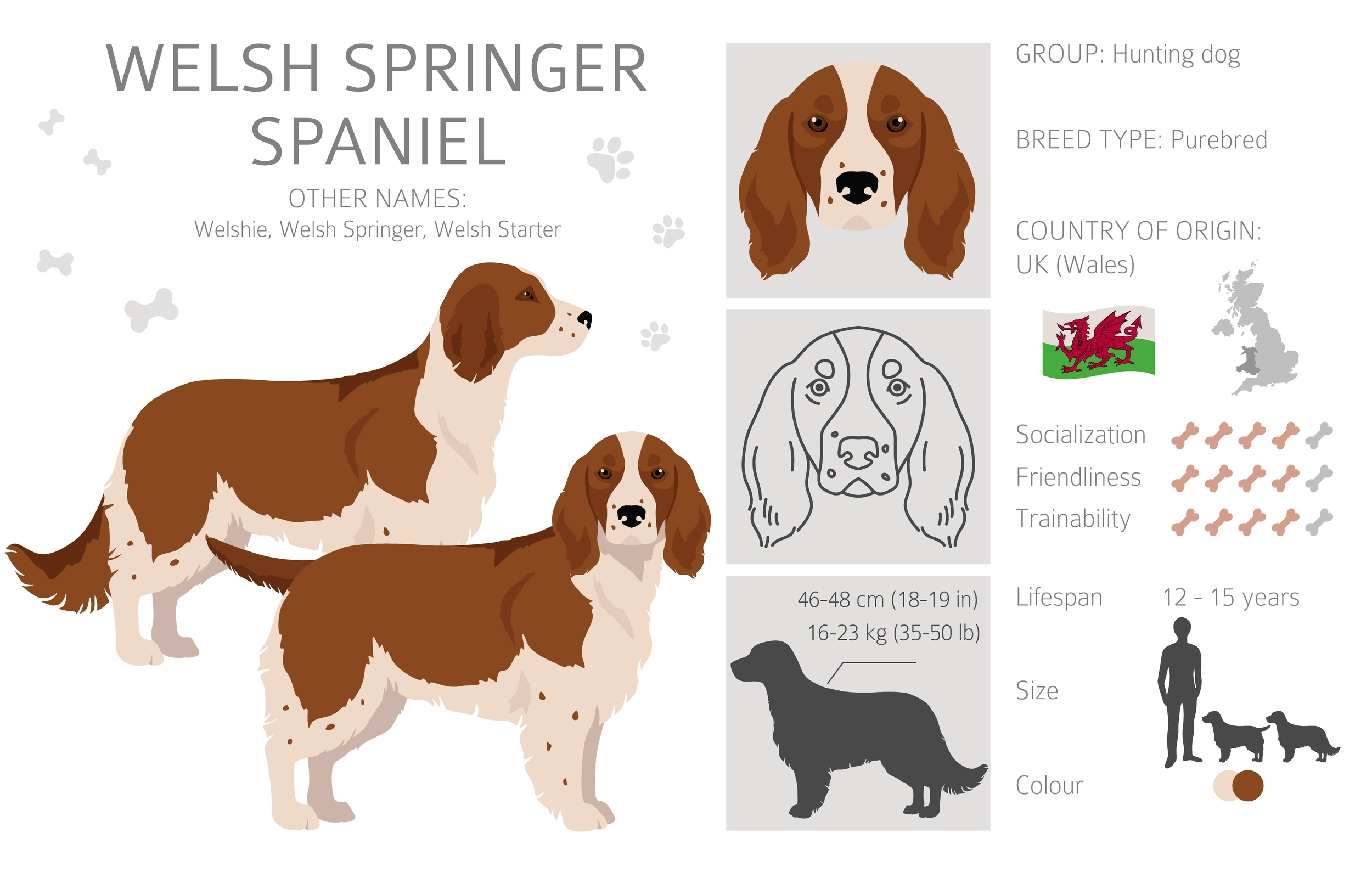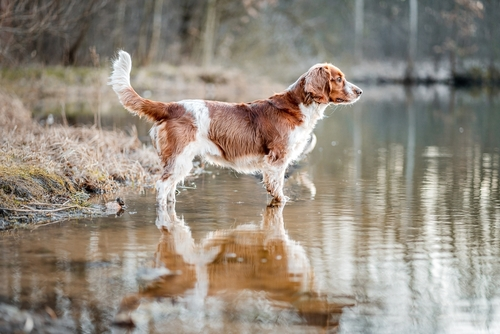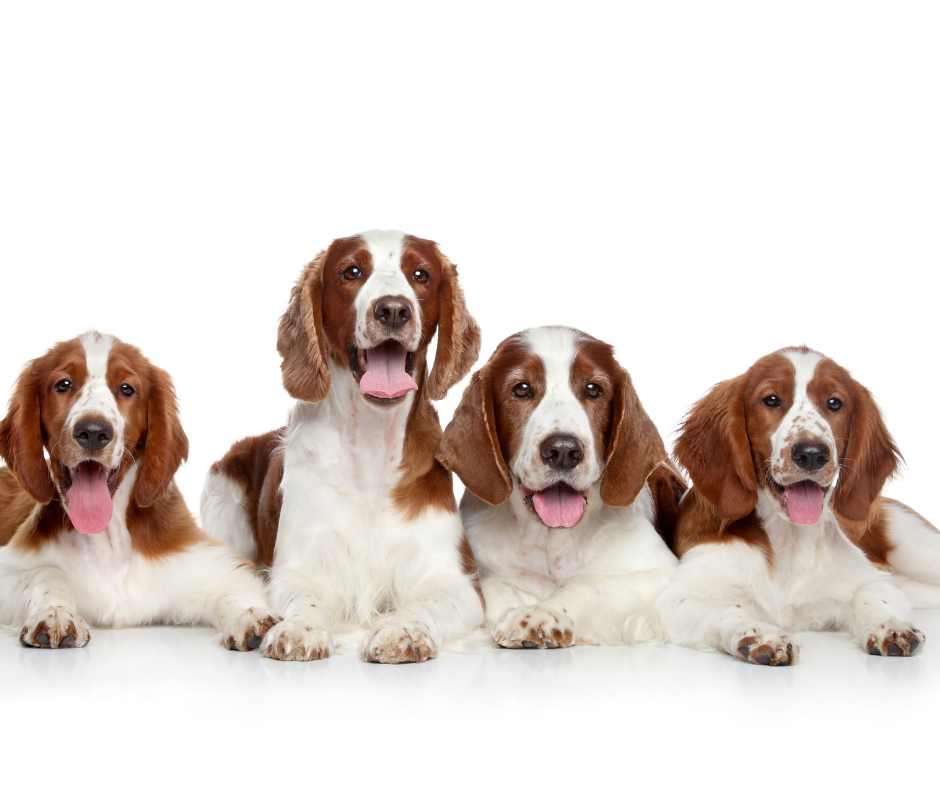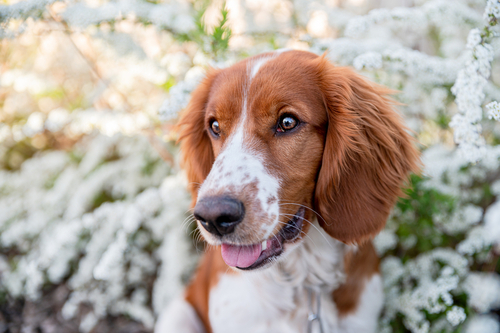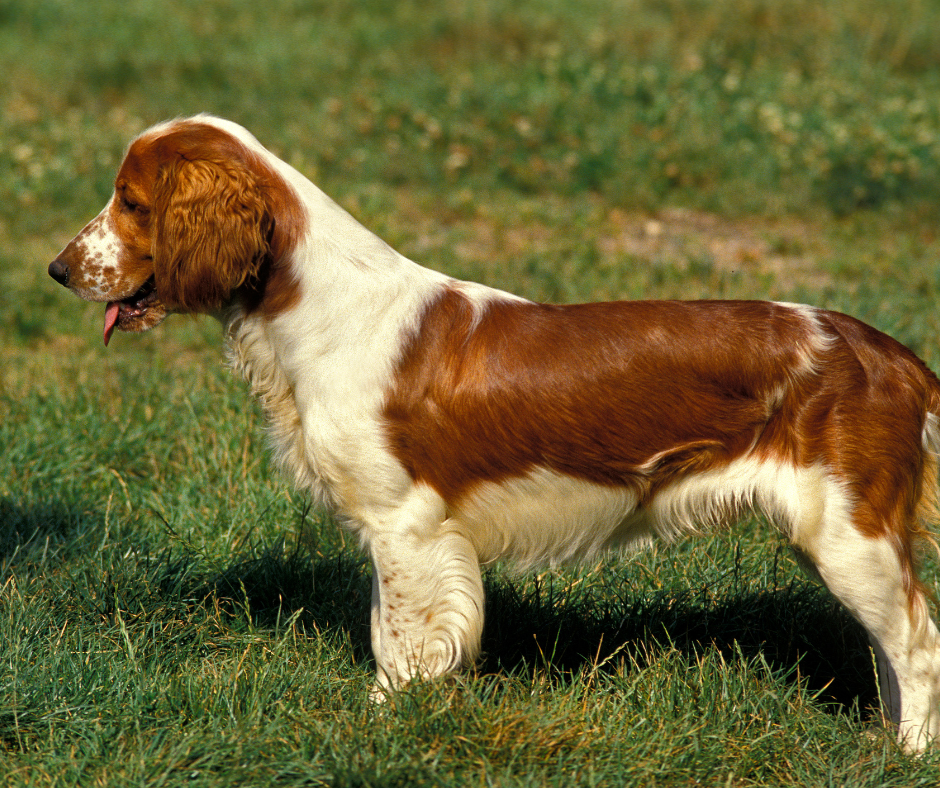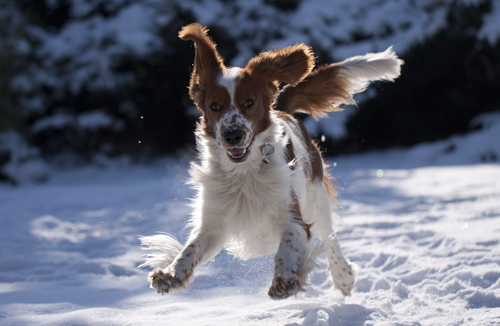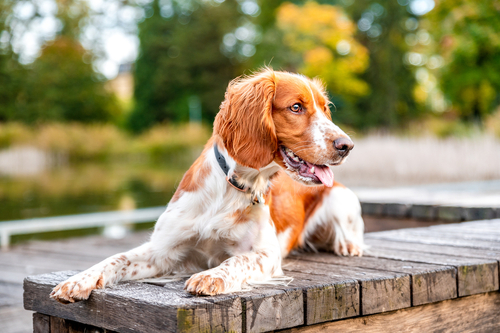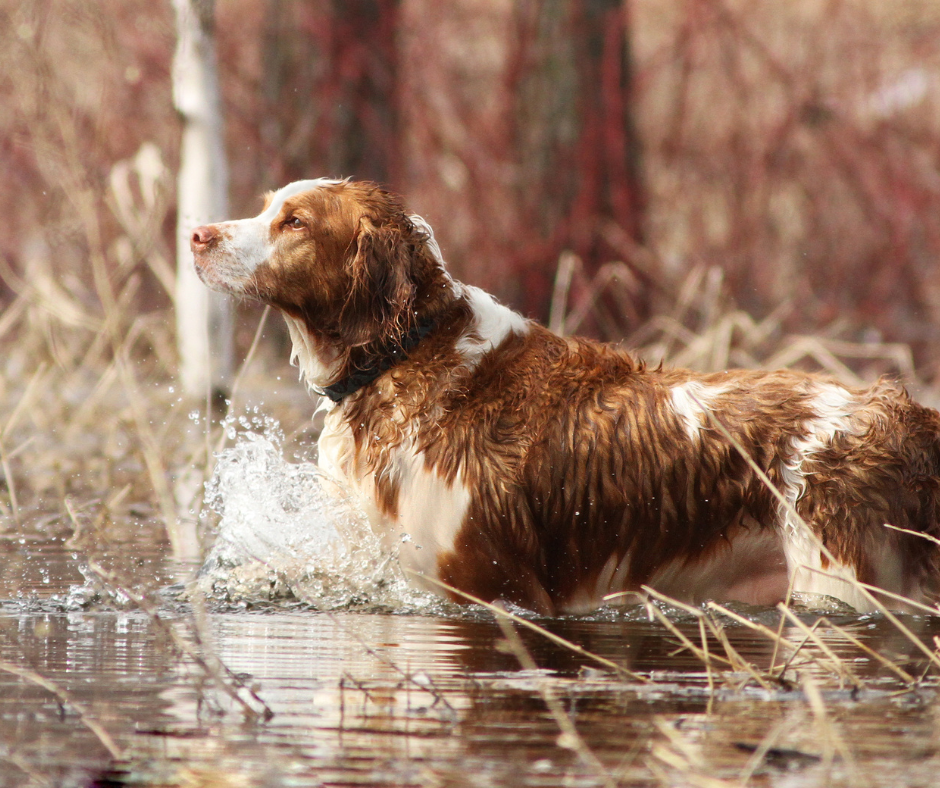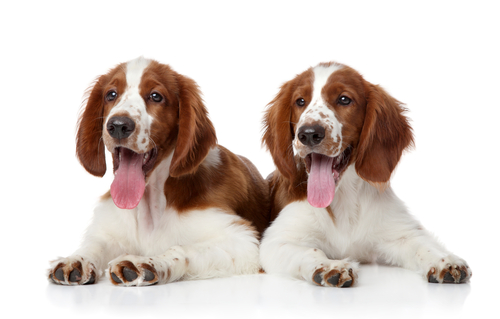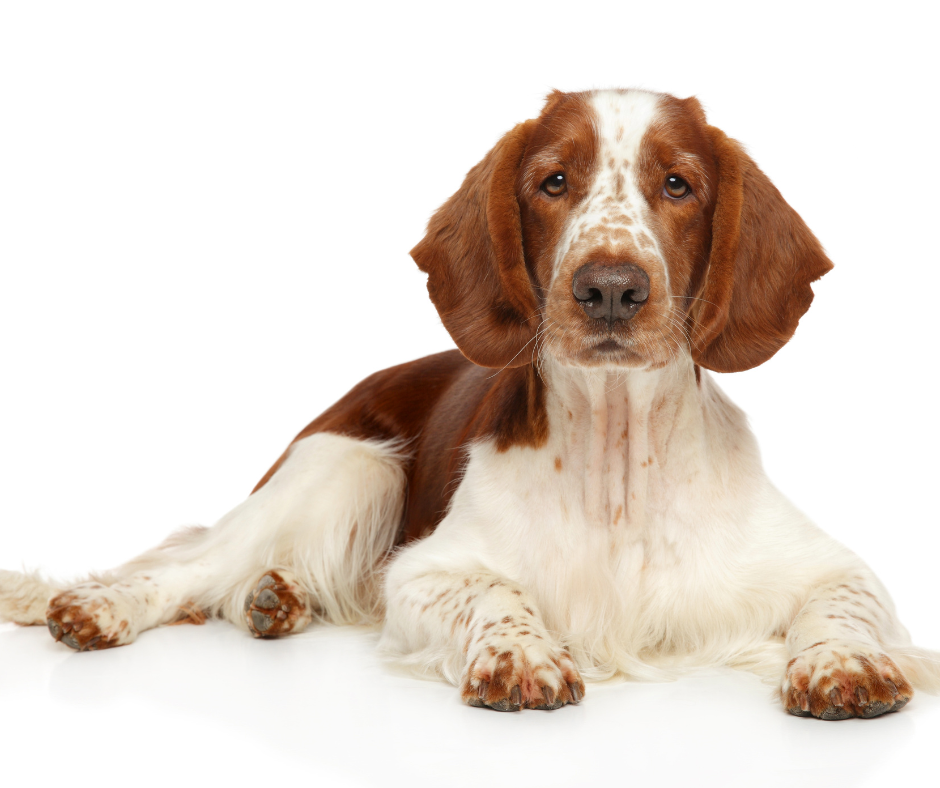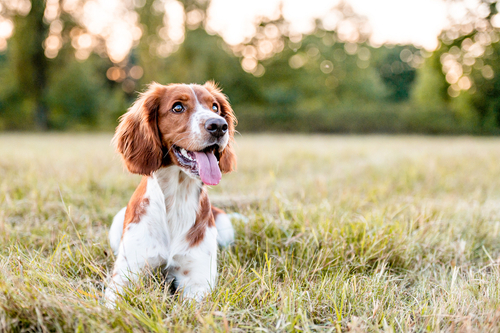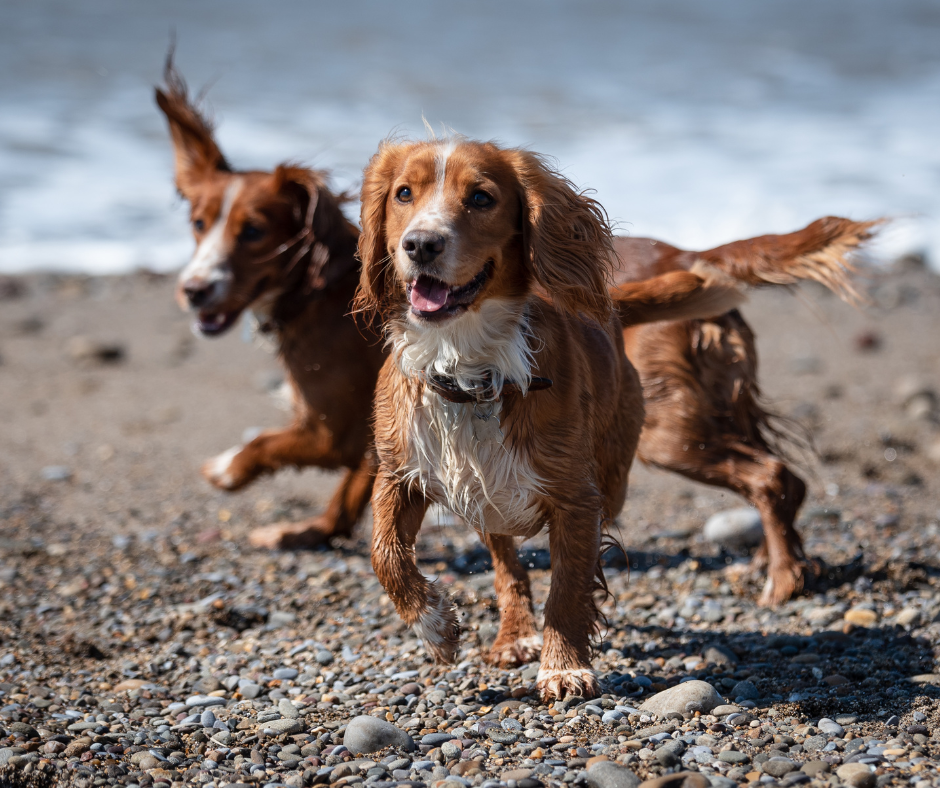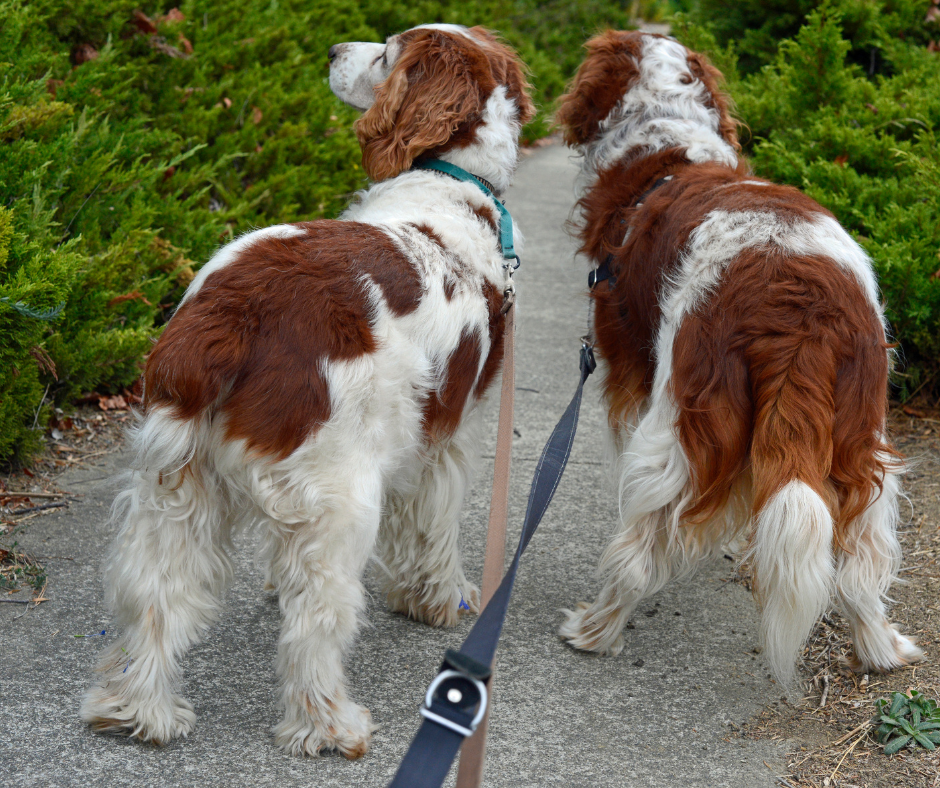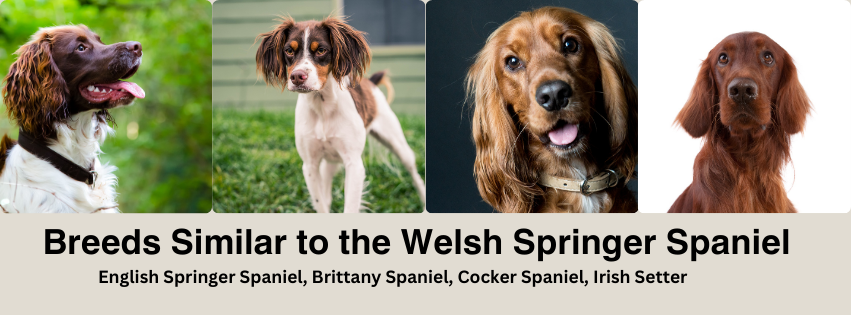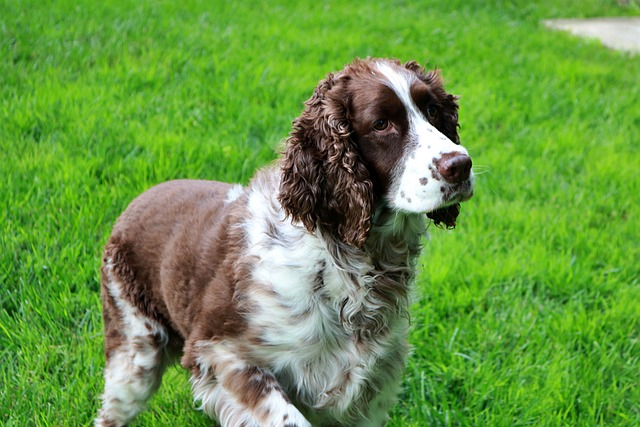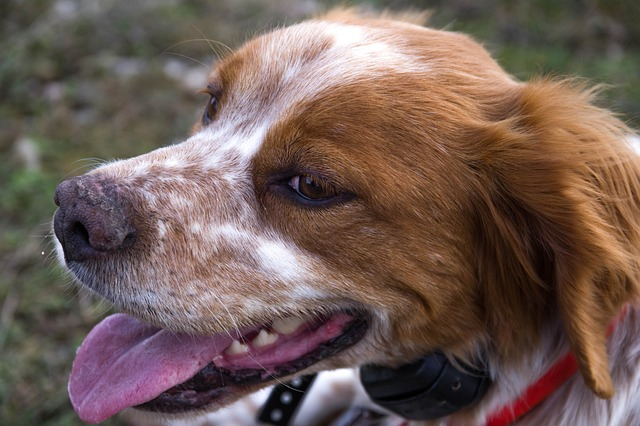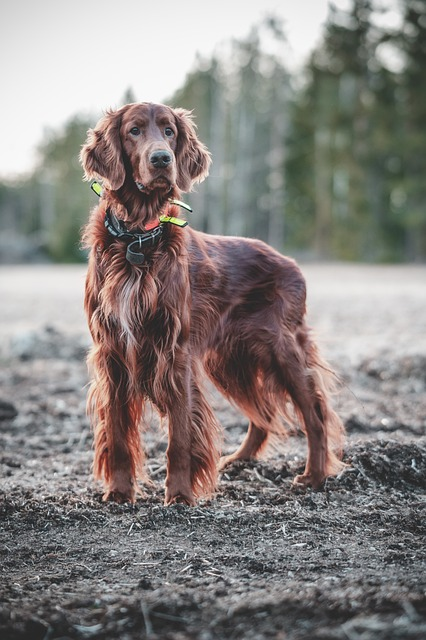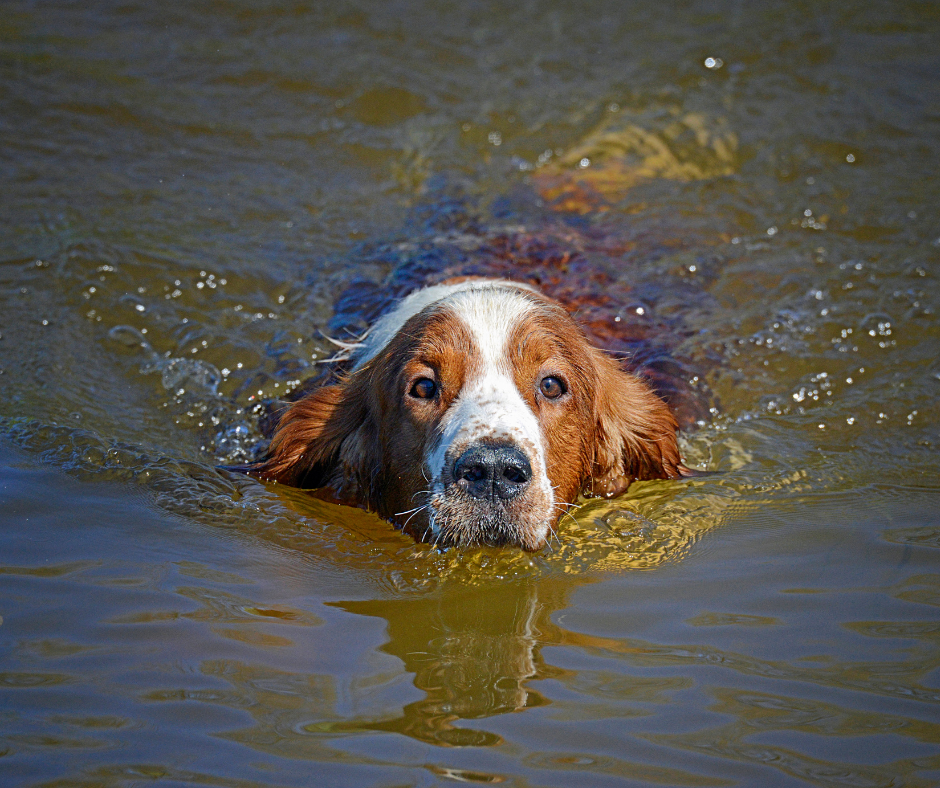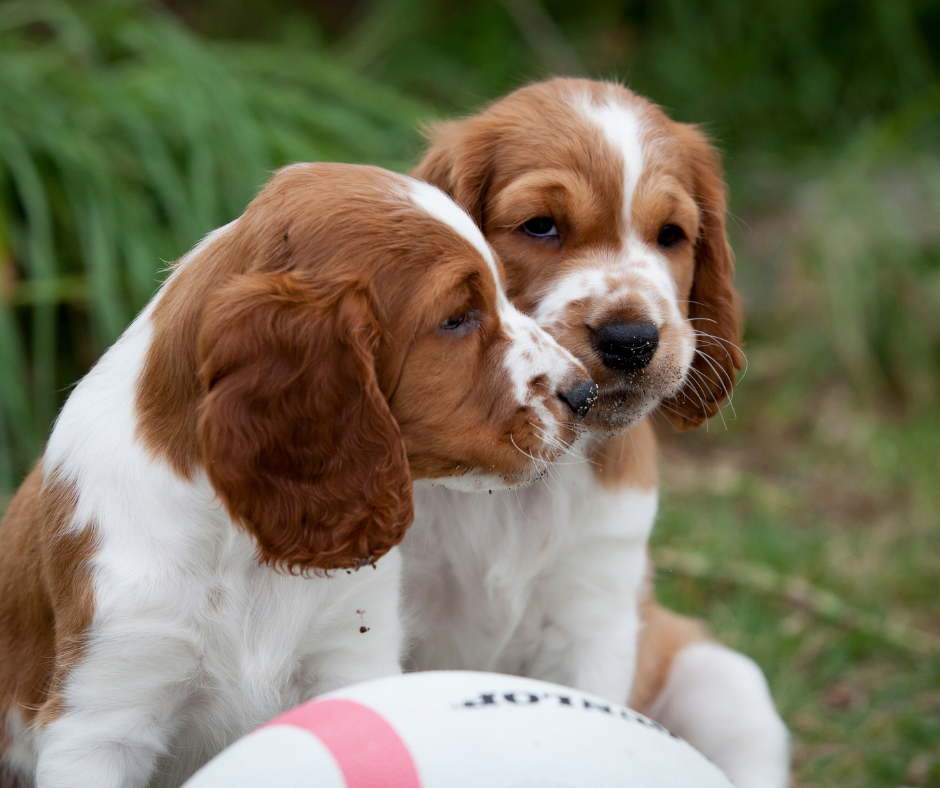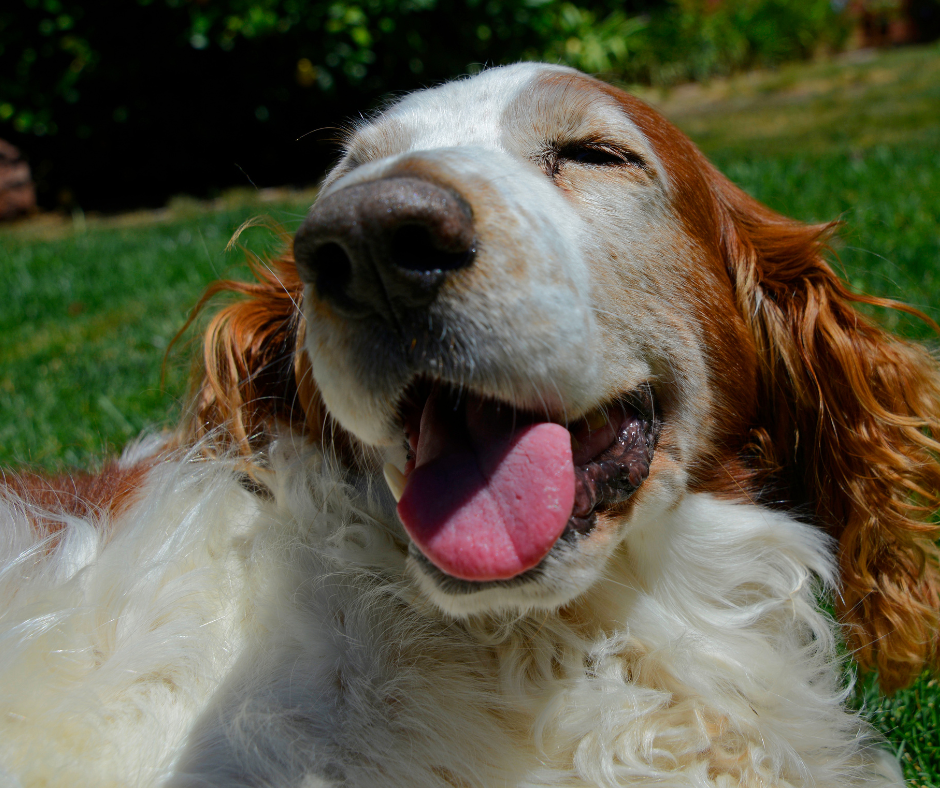Welsh Springer Spaniel

The Welsh Springer Spaniel, or Welshie, is an ancient breed believed to date back to Roman Britain. Renaissance artworks and 18th-century portraits feature dogs resembling modern Welshies. By the 19th century, they were primarily found in the Neath Valley, southern Wales.
Welshies are distinguished by their unique red and white coats. They are medium-sized, intelligent, and excel at retrieving on land and in water. Known for being trustworthy watchdogs and affectionate companions, they follow their families closely, earning the nickname “Velcro dogs.”
Typically weighing between 35 to 55 pounds, Welshies are loving, calm, and highly devoted to their families. They have a sleek, flat coat with feathery accents on their legs, chest, and belly, showcasing dark red fur with white ticking. Their moderate size makes them suitable for families with children, as they are sturdy enough to avoid injury. They are also friendly with other animals and have a guarded temperament towards strangers.
Welshies excel in agility and obedience competitions due to their refined sense of smell. They need daily exercise, such as an hour-long walk or a 30-minute jog, to stay content. Their primary role in the wild is to flush and retrieve birds.
Grooming a Welshie is relatively easy, as their fur resists tangles. However, brushing or combing at least twice a week is necessary to remove burrs and grass seeds. While they shed moderately, occasional professional grooming can help maintain their appearance, particularly around the ears, limbs, and chest.
The Welsh Springer Spaniel: A Comprehensive Guide
Introduction
The Welsh Springer Spaniel, known for its intelligence and loyalty, is a beloved breed among dog enthusiasts. These energetic dogs excel in both hunting and companionship roles. This article explores the breed’s history, physical characteristics, care requirements, health concerns, and temperament. We will also compare similar breeds to provide a comprehensive understanding of the Welsh Springer Spaniel.
History and Origin
Ancient Lineage
The Welsh Springer Spaniel has a long history, tracing back to the Iberian Peninsula. These dogs, once known as “Land Spaniels,” have been integral to Welsh culture for centuries. They were used primarily as hunting dogs, excelling in springing game birds from dense underbrush.
Historical Roles
Welsh Springers have always been reliable hunting companions. Their keen sense of smell and energetic nature made them ideal for flushing game birds. Unlike their English Springer Spaniel counterparts, Welsh Springers have a distinct hunting style and were often preferred for specific types of game. Additionally, compared to the English Cocker Spaniel, Welsh Springers are generally larger and have a different coat color, with the Welsh Springer typically having a red and white coat, while the English Cocker Spaniel often has a wider variety of colors.
Development of the Breed
The Welsh Springer Spaniel has a rich history, deeply rooted in its development and evolution as a distinct breed. The breed’s origins trace back to ancient times when it was known as a “Land Spaniel,” a term used to describe spaniels working on land rather than in water. These early spaniels were essential to hunters for their ability to flush and retrieve game from dense underbrush and challenging terrains.
Early Breed Evolution
The Welsh Springer Spaniel evolved alongside other spaniel breeds, particularly the English Springer Spaniel and the English Cocker Spaniel. In the early days, all these breeds were grouped under the broad category of “Land Spaniels.” It wasn’t until the 19th century that breed distinctions became more defined. The Welsh Springer Spaniel began to emerge as a unique breed, differentiated by its distinctive red and white coat and specific working style. Unlike the English Springer Spaniel, which became more popular in England, the Welsh Springer Spaniel maintained a strong presence in Wales, where it was highly valued for its versatility and reliability as a hunting dog.
19th and Early 20th Centuries
The 19th century was a pivotal period for the Welsh Springer Spaniel. During this time, selective breeding practices began to shape the breed’s characteristics more distinctly. Breeders focused on enhancing traits that made the Welsh Springer an effective hunting companion, such as its agility, stamina, and keen sense of smell. The breed’s distinctive red and white coat became a hallmark, setting it apart from other spaniels.
By the early 20th century, the Welsh Springer Spaniel had gained recognition as a distinct breed. In 1902, the breed was officially recognized by the Kennel Club in the United Kingdom, establishing a formal breed standard. This recognition helped to standardize the breed’s physical characteristics and temperament, ensuring consistency in breeding practices.
Read More: A History of Dog Breeding
World Wars Impact
The breed faced significant decline during World War II. Many Welsh Springers were lost, and the breed’s future seemed uncertain. The challenges faced by the breed during the World Wars were immense, but post-war efforts led to the breeding of the first Welsh Springer Spaniel, marking a pivotal moment in its revival. However, post-war efforts by dedicated breeders helped revive the population. The Welsh Springer Spaniel Club played a crucial role in maintaining breed standards and promoting the breed.
Modern Recognition
Today, the Welsh Springer Spaniel is recognized by major kennel clubs, including the American Kennel Club (AKC). Historically, it was known as the Welsh Spaniel and Welsh Cocker Spaniel, and it has been recognized by major kennel clubs. The breed’s standard emphasizes its red and white coat, expressive eyes, and energetic nature. The breed remains popular among hunters and families alike.
Read More: Dog Breeds Not Recognized by the AKC
Physical Characteristics
Size and Build
The Welsh Springer Spaniel is a medium-sized dog, known for its robust and agile build. Typically, these dogs weigh between 35 to 45 pounds and stand about 17 to 19 inches tall at the shoulder. Their compact and muscular frame is designed for endurance and agility, making them well-suited for a variety of physical activities, including hunting and dog sports. The Welsh Springer Spaniel’s body is slightly longer than it is tall, giving it a balanced and athletic appearance. Their strong legs, both front, and rear, are muscular and well-boned, providing the power and stamina needed for their working roles.
Coat Types
The coat of the Welsh Springer Spaniel is one of its most distinguishing features. This breed boasts a medium-length, silky coat that is rich in texture and color. The coat is predominantly red and white, with the red often described as a deep, rich hue that can range from a lighter golden red to a darker, almost mahogany shade. The white areas are typically found on the chest, underbelly, legs, and parts of the face, creating a striking contrast against the red. The red and white coat is not only aesthetically pleasing but also functional, offering protection against the elements.
Grooming Needs: Grooming Welsh Springer Spaniels
Grooming Welsh Springer Spaniels requires regular attention to keep their coats in prime condition. Weekly brushing is essential to prevent mats and tangles, especially in the feathered areas on the legs, chest, and ears. Their silky coat, while beautiful, can attract dirt and debris, necessitating occasional baths. It’s important to use a dog-specific shampoo to maintain the coat’s natural oils and shine. During shedding seasons, more frequent brushing may be required to manage the coat and reduce the amount of loose hair around the home.
Distinct Features
Several physical traits make the Welsh Springer Spaniel easily recognizable and unique.
Eyes
The eyes of the Welsh Springer Spaniel are one of its most expressive features. They are typically dark and almond-shaped, conveying a sense of intelligence, alertness, and warmth. The eyes are set slightly obliquely, giving the dog a keen and attentive look, essential for a hunting breed that needs to be constantly aware of its surroundings.
Ears
The ears of the Welsh Springer Spaniel are another distinctive feature. They are set high on the head and are relatively long, reaching just past the nose when pulled forward. The ears are covered in silky hair and are prone to ear infections if not regularly cleaned, as their floppy nature can trap moisture and debris. Regular ear checks and cleaning are essential to prevent infections and maintain ear health.
Body Structure
The Welsh Springer Spaniel’s body is well-proportioned and athletic, built for endurance and agility. The back is strong and level, providing stability and support during physical activities. The chest is deep and moderately broad, allowing for ample lung capacity and stamina. The legs are straight and muscular, contributing to the dog’s powerful and efficient movement. The tail is typically docked in countries where this practice is permitted, otherwise, it is left natural and carried with a slight upward curve, adding to the dog’s balanced appearance.
Movement
The gait of the Welsh Springer Spaniel is light, springy, and incredibly agile. This breed moves with a distinctive energy and speed, characterized by quick, efficient steps that allow it to cover ground rapidly. Whether running or herding, the Welsh Springer Spaniel’s movement is fluid and coordinated, showcasing its physical prowess and endurance. Their movement is often described as effortless and graceful, reflecting their heritage as active and efficient working dogs.
Adaptability
The physical characteristics of the Welsh Springer Spaniel make it highly adaptable to various environments and activities. Originally bred for hunting in the rugged terrains of Wales, this breed can thrive in different climates and living conditions as long as it receives adequate exercise and mental stimulation. Their coat provides protection against both cold and moderate heat, making them versatile and resilient dogs.
Temperament and Behavior
Welsh Springer Spaniel Personality
The Welsh Springer Spaniel is known for its affectionate, loyal, and energetic personality. These dogs form strong bonds with their family members and often stay close to their owners, earning the nickname “Velcro dogs.” They are intelligent and eager to please, making them highly trainable through positive reinforcement and consistent training. Their playful and friendly nature makes them excellent family dogs, especially with children and other pets. However, they require regular physical and mental stimulation to prevent boredom and potential behavioral issues.
Despite their high energy levels, Welsh Springers can be more laid-back compared to other spaniel breeds, such as the English Springer Spaniel. This balance of energy and calmness makes them versatile companions, suitable for active households as well as those looking for a loving, loyal pet. Early socialization is crucial to ensure they are well-behaved around strangers and in various environments, helping them develop into well-rounded and confident dogs.
Loyalty and Affection
Welsh Springer Spaniels are known for their loving and affectionate personality, as well as their loyalty. They form strong bonds with their family members and enjoy being involved in all family activities. These dogs are often described as “Velcro dogs” due to their desire to stay close to their owners.
Energy Levels
These are high-energy dogs that require regular exercise. Welsh Springers thrive in active households where they can participate in various activities. Daily walks, playtime, and interactive games are essential to keep them mentally and physically stimulated.
Trainability
Welsh Springers are intelligent dogs that respond well to consistent training, which is essential for meeting the Welsh Springer Spaniel’s training needs. Positive reinforcement and clicker training are effective methods. Early socialization is crucial to prevent separation anxiety and ensure they are well-behaved around other pets and strangers.
Read More: Dog Training 101
Social Behavior
Welsh Springers are friendly and sociable dogs. They get along well with other dogs and pets, especially when properly socialized from a young age. They are excellent with children and make great family dogs, although supervision is necessary to prevent rough play.
Sensitivity
These dogs are sensitive both emotionally and physically. Gentle training methods work best, as harsh corrections can lead to anxiety. They thrive in environments where they are treated with kindness and respect.
Care and Grooming
Exercise Requirements
Welsh Springer Spaniels need at least 2 hours of exercise daily. They enjoy activities such as hiking, running, and playing fetch. Regular exercise helps prevent boredom and behavioral issues.
Grooming Routine
Regular grooming is essential for maintaining the health and appearance of Welsh Springers. Weekly brushing helps remove loose hair and prevent mats. Their floppy ears should be checked and cleaned regularly to avoid infections. Bathing should be done as needed, usually once a month.
Diet and Nutrition
A high-quality dog food is crucial for Welsh Springers. They typically need about 2.5 cups of food per day, divided into two meals. Puppies have different nutritional needs and should be fed puppy-specific food until they reach adult size. Fresh water should always be available.
Health Maintenance
Routine vet check-ups are essential to monitor the dog’s health. Dental care, including regular brushing and professional cleanings, helps prevent dental diseases. Vaccinations, flea and tick prevention, and regular deworming are also important.
Read More: How to Brush your Dog’s Teeth
Health Concerns
Common Health Issues
Welsh Springer Spaniels are generally healthy, but they can be prone to certain genetic conditions. Common health issues include:
- Hip Dysplasia: Improper development of the hip joint, leading to arthritis and pain.
- Elbow Dysplasia: Similar to hip dysplasia but affects the elbow joints.
- Ear Infections: Due to their floppy ears, which can trap moisture and debris.
- Eye Problems: Conditions such as progressive retinal atrophy (PRA) and cataracts.
Preventive Care
Responsible breeders perform genetic testing to minimize the risk of inherited diseases. Regular health screenings, a balanced diet, and proper exercise can help maintain the breed’s health. Early detection and treatment of health issues are crucial for a long and healthy life.
Lifespan
Welsh Springer Spaniels have a lifespan of 12-15 years. With proper care and regular veterinary check-ups, many live long, healthy lives.
Living Conditions
Environment
These dogs adapt well to various living conditions but thrive best in homes with ample space. A fenced yard is ideal for their high energy levels. They can adapt to apartment living if given sufficient exercise and mental stimulation.
Compatibility with Other Pets
Welsh Springers, historically known as Welsh Cockers, generally get along well with other pets. Early socialization helps ensure they behave well around other dogs and animals. They are particularly good with other spaniels and breeds with similar temperaments.
Read More: Does your Dog need a Friend?
Family Life
These dogs make excellent family companions. They are loyal, protective, and affectionate with family members. Their playful nature makes them great with children, though supervision is necessary to prevent rough play.
Living Needs
Welsh Springers require an environment that provides both physical and mental stimulation. They thrive in active families who can engage them in various activities. Consistent training and socialization help them adapt to different living conditions.
Training and Socialization
Training Techniques
Positive reinforcement training methods work best for Welsh Springer Spaniels. They respond well to clicker training and treat-based rewards. Consistent training helps manage their high energy and strong will.
Socialization Strategies
Early socialization is key to raising well-behaved Welsh Springers. Exposing them to different people, animals, and environments helps them develop confidence. Puppy kindergarten classes and regular playdates can aid in socialization.
Dog Breeds Similar to the Welsh Springer Spaniel
English Springer Spaniel
English Springer Spaniels shares a similar size and energy level with the Welsh Springer. Both breeds are excellent hunting dogs and family companions.
Brittany Spaniel
The Brittany Spaniel is another high-energy hunting breed known for its intelligence and agility. Like Welsh Springers, they thrive in active households and excel in canine sports.
Cocker Spaniel
Cocker Spaniels, including both English and American varieties, share the affectionate and loyal nature of Welsh Springers. They are slightly smaller but equally energetic and playful.
Irish Setter
The Irish Setter is a high-energy breed that excels in hunting and makes a great family companion. Their grooming needs are similar to those of Welsh Springers, requiring regular brushing and care.
Activities and Sports
Canine Sports
Welsh Springer Spaniels excel in various canine sports, including agility, obedience, and hunting trials. These activities provide physical and mental stimulation, keeping the breed happy and healthy.
Hunting and Retrieving
Their natural hunting abilities make Welsh Springers excellent hunting companions. Training for hunting and fieldwork emphasizes their skills in flushing and retrieving game.
Interactive Play
Regular playtime and interactive games are essential for preventing boredom. Toys that challenge their intelligence and physical abilities are particularly beneficial.
Choosing a Welsh Springer Spaniel
Responsible Breeders
Choosing a reputable breeder is essential when adopting a Welsh Springer Spaniel. Responsible breeders perform health screenings and adhere to breed standards. The Welsh Springer Spaniel Club is a valuable resource for finding reputable breeders.
Adoption Options
Adopting from breed-specific rescues or shelters is another option. The national breed club can also be a valuable resource for finding Welsh Springer Spaniel rescues or adoptions. These organizations often have dogs in need of loving homes. Adoption provides a second chance for dogs and supports rescue efforts.
Puppy Selection
When selecting a Welsh Springer Spaniel puppy, consider temperament, health, and the breeder’s reputation. Early socialization and training are crucial for a well-adjusted pet. Choose a puppy that fits your lifestyle and can thrive in your home environment.
Conclusion
Summary
The Welsh Springer Spaniel is a versatile and loyal breed that excels in both hunting and family companionship roles. With its rich history dating back to ancient times, this breed has developed into an intelligent, energetic, and affectionate dog. Known for its distinctive red and white coat, the Welsh Springer Spaniel requires regular grooming and exercise to maintain its health and happiness. These dogs thrive in active households where they can engage in various activities and receive consistent training and socialization.
Final Thoughts
Prospective Welsh Springer Spaniel owners should consider the breed’s high energy levels, grooming needs, and sensitivity. These dogs are best suited for families who can provide ample physical and mental stimulation. When choosing a Welsh Springer, it is important to work with responsible breeders or adopt from reputable rescues. With proper care, training, and love, the Welsh Springer Spaniel makes a wonderful, loyal, and loving companion.
- Group AKC Sporting
- Origin United Kingdom
- Size Medium
- Weight 40 to 45 pounds
- Coat Length Medium
- Coat Type Double
- Colors Red & Whtie
- Other Names Welsh Springer, Welsh Cocker Spaniel, Welsh Starter, Welshie
- Temperament Affectionate,Loyal,Active,Friendly,Playful,Stubborn,Intelligent





















